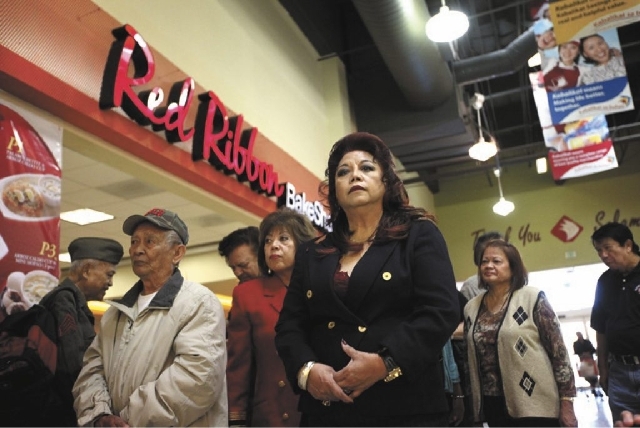UNLV professor studies Filipinos dancing away risk of heart disease

One UNLV nursing professor has prescribed ballroom dancing as a weapon against cardiovascular disease among Filipinos.
The topic hits close to home for Alona Angosta, a University of Nevada, Las Vegas assistant professor researching the health of Filipinos in Southern Nevada.
“I have family and friends affected by the disease,” she said.
Cardiovascular disease is the leading cause of death among Filipinos, a population that is one of the fastest growing in Nevada, especially in Clark County, Angosta said. The large number of Filipinos calling Southern Nevada home made her feel that it was important to take a look at their health.
Filipinos are the “No. 1 minority group in the Asian population in Southern Nevada,” said UNLV assistant professor Rhigel “Jay” Alforque Tan, who was also involved with the research.
Ballroom dancing entered the picture after Angosta completed a 2011 study on the health of 300 Filipinos in Clark County. Half of them suffered from hypertension, putting them at risk for cardiovascular disease.
Angosta then decided to take a look at the lack of exercise among Filipinos and see what she could do to get them to exercise. She and Tan brainstormed and came up with the idea of using ballroom dancing to encourage Filipinos to be physically active as part of a pilot study.
“They like dancing so that’s where we started,” she said.
The researchers were able to recruit 41 individuals and their partners to do ballroom dancing for two hours, once a week, for 12 weeks. Only four individuals withdrew from the pilot study.
Participants were surveyed at the beginning and end of the study to see whether they had enjoyed ballroom dancing and to determine whether they would continue it, Angosta said.
“They want to keep doing it,” she said.
In taking her research to the next level, Angosta plans to look at the Filipino diet and hopes to find ways to get them to change their eating habits.
“The Filipino diet is very rich and saturated fat,” she said. “It’s also rich in sodium.”
Though the research was on a small scale, Angosta and Tan hope their work will get more people interested in addressing the health needs of Filipinos in the area.
Angosta said she also is making her nursing students aware of the health issues that this group faces because they are the future staff for Clark County health care facilities.
“We are actively looking into health, but there’s need for other services,” Tan added.
There also is a need for more Filipinos themselves to get involved in the community. More of them are needed to fill leadership roles and to take public office positions, he said.
“You need to be involved, especially in government affairs and political affairs to make a difference,” said Tan, who in 2011 was appointed by Gov. Brian Sandoval to serve on the Nevada State Board of Nursing.
According to the 2010 U.S. Census, there was an 142 percent increase in Las Vegas’ Filipino population over a 10-year period, Tan said. Statewide, the Filipino population approached 100,000, the census found.
Most of the Filipino population in the U.S. reside in California and Hawaii, but because of the high cost of living in California, many are moving to Nevada.
“They come here because of the affordable housing,” he said.
Many of them work in the casinos and in the health care industry, Angosta said. They make up a large segment of the working nurses in the area. Still, Tan is the only one on the Nevada State Board of Nursing.
“At least I can bring their voice in,” he said.
Contact Yesenia Amaro at yamaro@reviewjournal.com or 702-383-0440.












